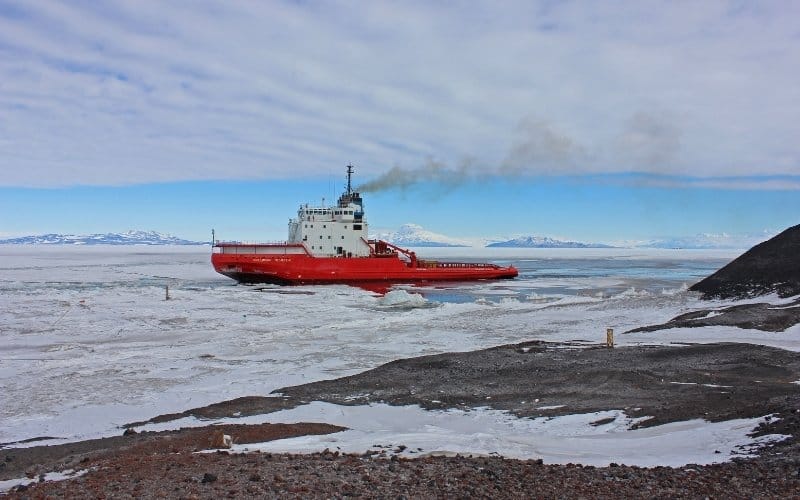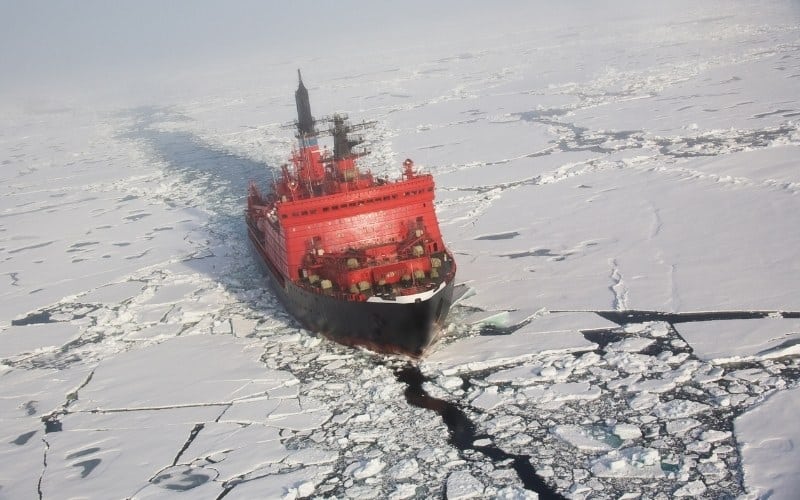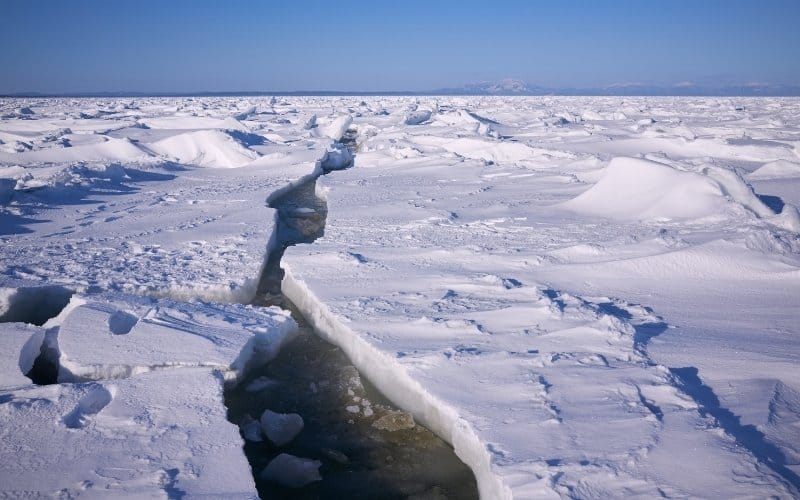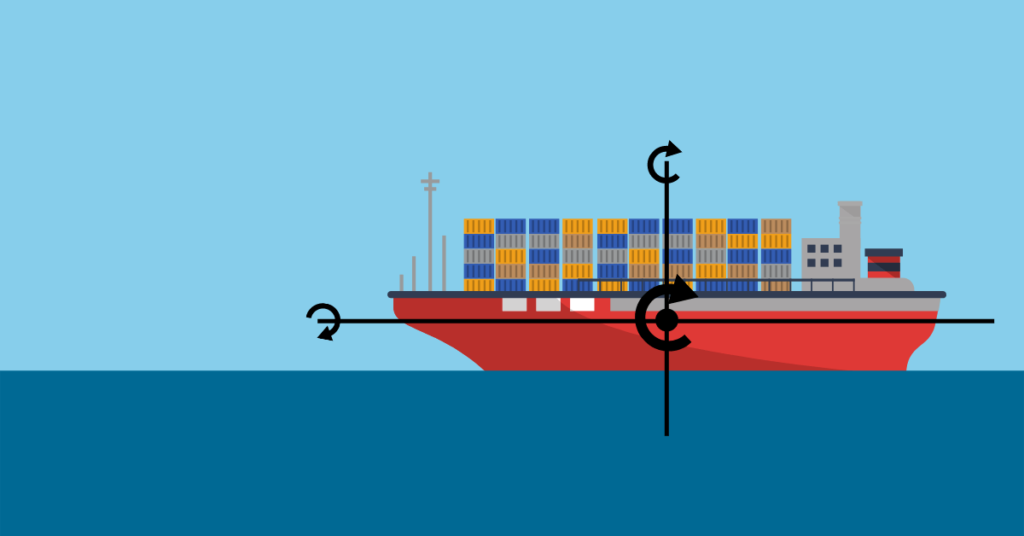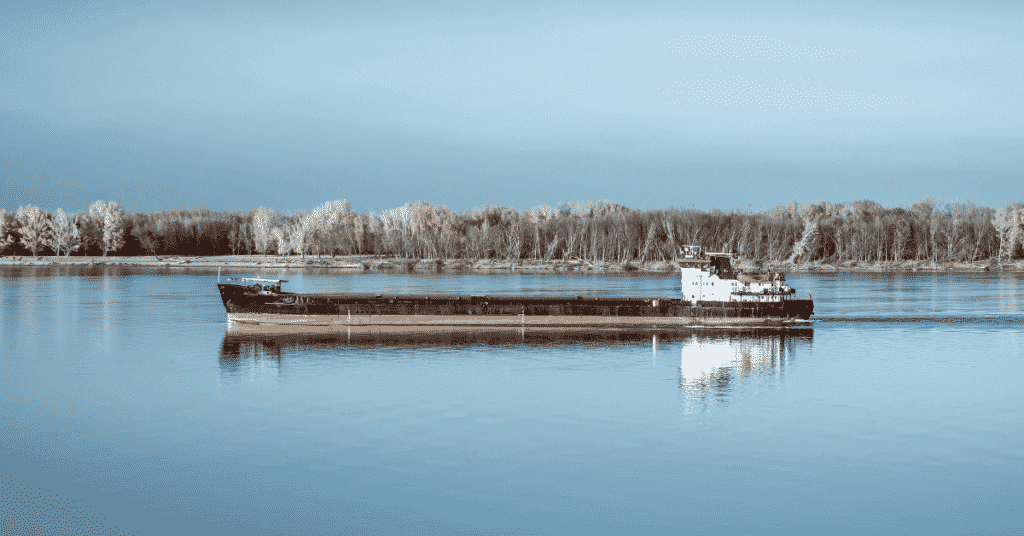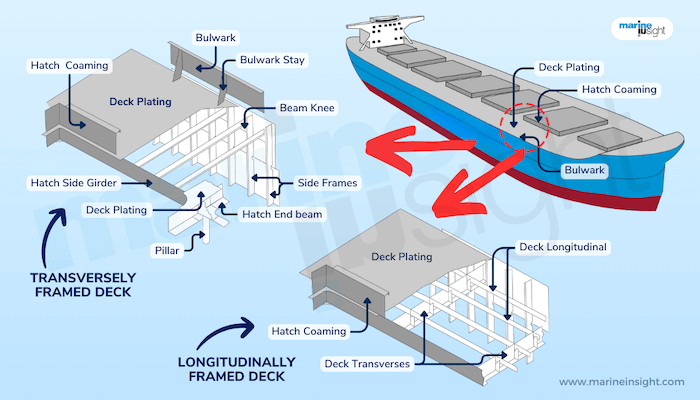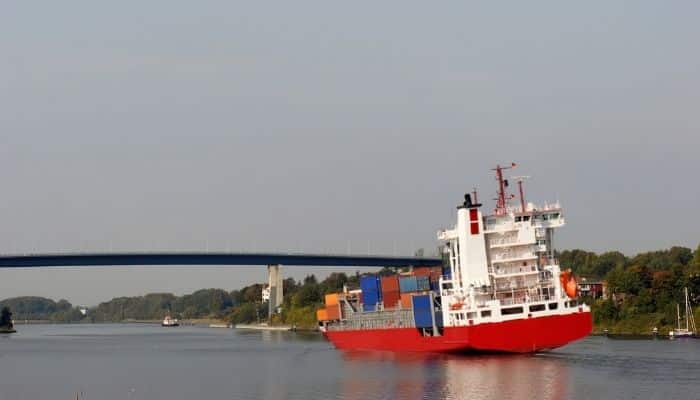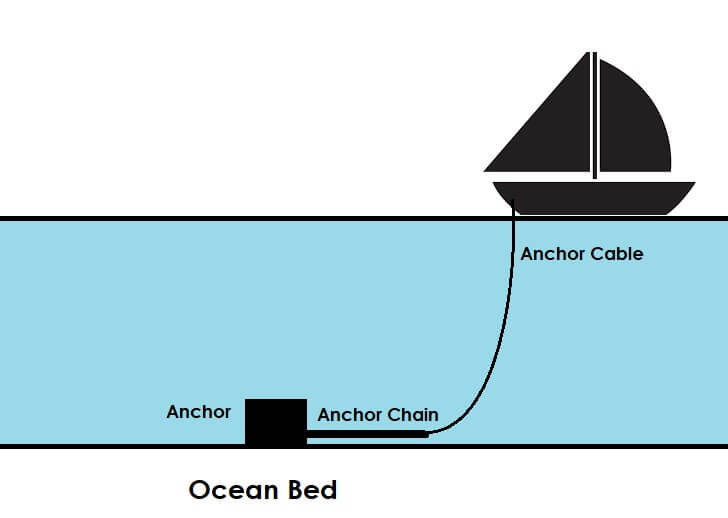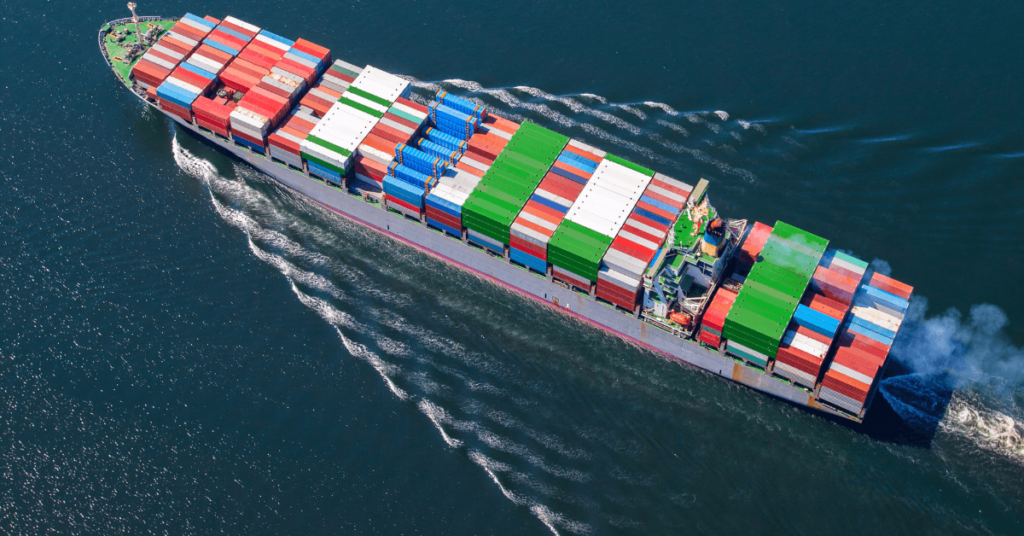Understanding Design of Ice Class Ships
As we all are aware, a special type of ships is used for icy water regions. A general name, which is commonly used for such ships is “Icebreakers”.
However, not all ice-plying vessels are icebreakers, some are termed as ‘ice-class’ or ‘polar-class’ vessels.
Let’s have a brief insight into the technicalities of this type of vessels and also delve into their subtle differences and similarities.
Icebreakers Vs. Ice Class Ships
Icebreakers are special-purpose vessels designated for breaking ice floes, sheets, and piles in cold climates where the water is mainly icy.
They may be suited explicitly for icebreaking operations or for other special purposes.
On the other hand, ice-class ships are usually general-purpose design ships with an additional level of strengthening and arrangements for navigation and sustenance in ice.
The rules and guidelines incorporated for the construction and construed for classification are known as the “Ice Class” Rules.
Related Read: 5 Important Points for Ice Navigation of Ships
But before delving deeper into the technical and construction aspects of these ships, let us briefly have an insight into the ice environment and the physics of the behaviour of ice with such vessels.
Environment and Climate Change – An Important Factor For Ice Classed Ships
Though during wintry months, many of the sea routes in the temperate and frigid zones get laden with ice cover, a lion’ share of ice cover is concentrated in the polar regions, i.e. the Arctic and the Antarctic.
As per a recent study data, the ice cover extents of the Arctic and Antarctic are 5.1*106 km2 and 18.2 km2 respectively. Due to Global Warming and climate change, this ice cover extents are gradually dwindling.
Apart from the ubiquitous problems of flooding, loss of vegetation or drastic climate change, this issue poses other problems as well. The broken ice floats farther as icebergs, sheets or floes and has a crucial effect on the navigational traffic of related seas. Worth mentioning, accidents as well due to collision damage with icebergs or icecaps. Remember Titanic?
Related Read: 10 Ships Sunk By Accident with Iceberg
Thus, the implications of icing have an indispensable presence in the guidelines and regulations of designated vessels for such areas. But first, let us have a brief and simple discussion related to ship-ice interaction.
Ice, as we know can be of various types such as floes, sheets, bergs or brash ice. Moreover, they differ in their physics, behaviour, strength, and stability. This consequently can have a varied impact on their interaction with vessels and other structures.
Types of Ice
To sum up, broadly there can be the following types of ice commonly found in the sea:
- Frazil Ice
- Brash Ice
- Floe Ice
- Ice Cake
- Fast Ice
- Pack Ice
Other types do exist, but these are mainly considered in the interest of ice-plying vessels and are related to these principal types only in some way or the other.
Pack ice is large chunks of floating ice triggered from larger ice forms or masses covering a large section of water.
Frazil ice is like ice flakes or needles suspended in water. They have an insignificant effect on vessels but may be considered for resistance and abrasive effects onto the hull.
Brash ice is in the form of loosened fragments, basically, like a wreckage of bigger forms of floating ice lesser than 3 metres thick and 2-metre diameter.
Floes are basically flat pieces of ice sheets spread over a vast expanse with small variations in thickness. They too are larger break-offs from pack ice.
Cake ice, as depicted from the name are circular pieces of ice with a certain thickness welling up from the mean sea level.
Fast ice is harder forms of ice, which generally remain attached to the shore or ice wall. They are often dictated by surrounding sea level and may replenish themselves over years.
The age of ice is a foremost factor. Here too, they may be classified into following main kinds of heads:
- New ice and young ice
- First-year ice
- Old ice
New ice is formed as a result of the recent freezing of seawater. They have less thickness (up to 10 cm) and do not pose hazardous ice loads on ships. But they are never to be neglected in ice-class designs. They include frazil ice, brash ice or cakes.
Young ice is slightly harder and thicker (10 cm-30 cm). If they survive up to one year, they may thicken into First Year Ice.
If a pack of ice survives multiple melting seasons, they may accrue into a harder form. This is the multi-year ice. Another factor is the size of ice. The expanse of an ice cover varies from sporadic free-floating pieces to large packs and ridges.
Ridges are said to be the thickest sea ice features and account for half of the total ice volume. They are mount-like features formed as a result of continued stress, convergence and collision between two successive ice covers.
Found gradually on the sea ice boundaries, they consist of layers of ice rubble and floes piled up above and below the waterline. The part below the waterline is generally larger in size as compared to the part above.
Nonetheless, all forms of ice pose threat in varying degrees to vessels plying on icy waters and needs to be taken care of. So, in the design regulations of these vessels, several factors are taken into consideration, such as:
- The expanse of ice cover
- Level ice thickness
- Sea and air temperatures
- Density
- Age of ice cover, as described above
Related Read: How the Ice Melting in the Arctic has Affected the Shipping Industry?
Ship Design For Ice
When we consider ships plying in icy waters, we consider various implications of the weather conditions persisting in that region. This may be divided as:
- The structural consideration, which is the foremost aspect as it involves designing and strengthening of the hull for negotiating with ice en route
- Machinery, systems, and equipment, which must operate in sub-zero temperatures
- Freezing of deck and superstructure
- Visibility issues
Related Read: What to Do When the Ship is Moving towards Sub Zero Temperature Area?
Prior to speculating these aspects, let us first look into the fundamentals of ice loads.
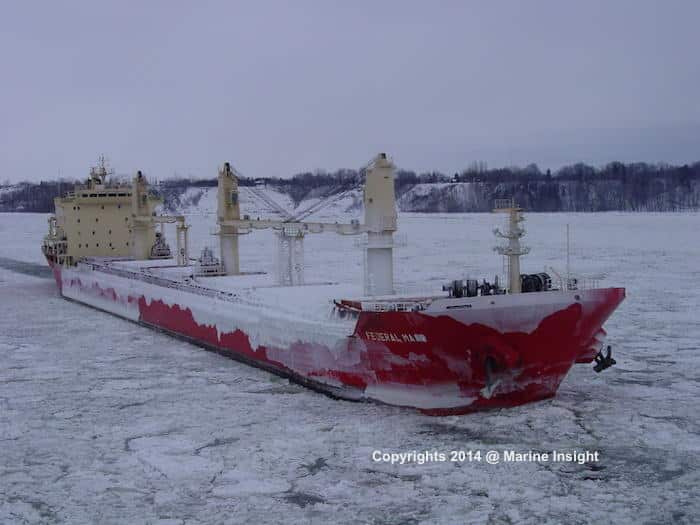
What are ice loads on ships?
Like traditional hydrostatic and hydrodynamic loads, the ice too poses high modulus of forces onto the hull as obvious. Moreover, ice being in a solid-state and having varied sizes and features can cause damage to the hull if unattended. So, vessels plying in icy regions have different build specifications taken into account.
Now, think of this? When a ship encounters ice, any or a combination of the following may occur:
- The vessel may ram or stave through the ice
- The vessel may drift the ice sidewards if given suffice space and low interaction forces
- The vessel may climb the ice and press it downwards by the virtue of its weight
- The vessel may shear through the ice, breaking it into smaller fragments henceforth.
Related Read: What To Do When A Ship Is “Beset”?
As the age, formation, and size of ice in a particular geographic region are multi-variant, the vessel must be structurally and functionally capable of withstanding all plausible types of ice conditions. Apart from the main hull, the propeller and rudder along with appendages (if any) must be capable of enduring ice interactions without compromising the required design performance of the vessel.
Continuing our discussion with icing loads, we can look into 3 crucial aspects of ice loads. They are:
- Physically encountered ice conditions
- Statistics of ice loads
- Mechanics of ice loads
While the encountered ice conditions deal with the physical properties, distributions, occurrences, and variations of ice, the statistics include dealing with statistical data of climates and icing.
Mechanics is the end result of these as they directly dictate the extent of design philosophies incorporated into a vessel enduring such conditions.
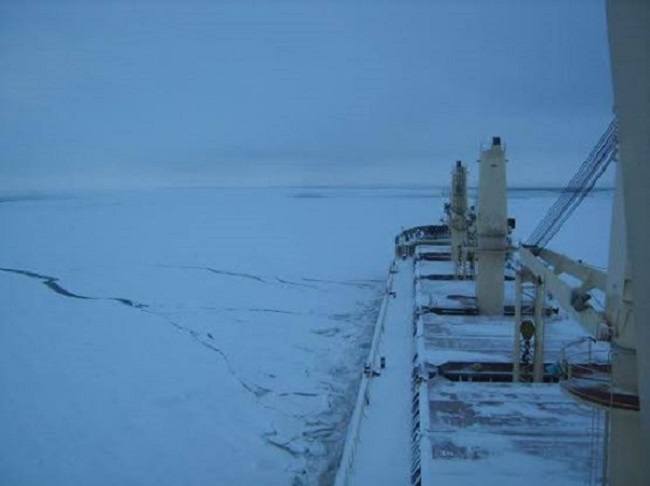
Now, when we contemplate about vessels plying in ice, the most crucial thing that logically comes to the mind is the need for strengthening. This is obviously true.
Classification regulations for strength are incorporated in all sorts of such vessels in varying degrees. From the design point of view, some other alterations are also made depending on the type of vessel and its utility.
In the next article, we will continue our discussion with these aspects as well as ideas on classification for ice.
You might also like to read:
Design And Construction Of Ice Class Ships – Part 2
Design And Construction Of Ice Class Ships – Part -1
Disclaimer: The authors’ views expressed in this article do not necessarily reflect the views of Marine Insight. Data and charts, if used, in the article have been sourced from available information and have not been authenticated by any statutory authority. The author and Marine Insight do not claim it to be accurate nor accept any responsibility for the same. The views constitute only the opinions and do not constitute any guidelines or recommendation on any course of action to be followed by the reader.
The article or images cannot be reproduced, copied, shared or used in any form without the permission of the author and Marine Insight.
Do you have info to share with us ? Suggest a correction
Latest Naval Arch Articles You Would Like:
Subscribe To Our Newsletters
By subscribing, you agree to our Privacy Policy and may receive occasional deal communications; you can unsubscribe anytime.
Web Stories

About Author
Subhodeep is a Naval Architecture and Ocean Engineering graduate. Interested in the intricacies of marine structures and goal-based design aspects, he is dedicated to sharing and propagation of common technical knowledge within this sector, which, at this very moment, requires a turnabout to flourish back to its old glory.



